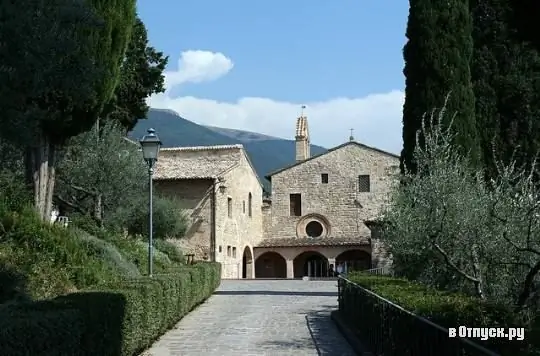
Description of the attraction
San Damiano is a church and monastery located in the vicinity of Assisi. This is the first monastery of the Order of the Clarice, founded by Saint Clara, a follower of Saint Francis. Before that, it housed a small Benedictine skete, the first mention of which dates back to 1030.
Probably one of the most significant legends associated with San Damiano is the one that tells of the meeting of Saint Francis of Assisi with Jesus Christ in 1205. Francis was praying in the church, which at that time was practically in ruins, when he saw the figure of the crucified Christ and heard the words addressed to him: “Francis, can't you see that my house is falling apart? Go and restore it! The saint understood these words literally and with his own hands began to restore San Damiano, although later he realized that in his epistle Christ spoke about the Church as a whole, and not about one separate building. The cross from which Jesus spoke to Francis is today known as the Cross of San Damiano and is kept in the Basilica of Santa Chiara in Assisi.
In 1212, Saint Clara and her followers settled in San Damiano - they lived here until 1260, after which they moved to the present monastery of the Order of the Clarice. It was here in 1253 that Saint Clara died.
In front of the Church of San Damiano, you can see a covered gallery. To the right is the chapel of San Girolamo with frescoes by Tiberio d'Alessi, a student of Perugino, made in 1517-1522. The single-nave church has a vaulted ceiling and an apse, also decorated with frescoes from the early 14th century. The crucifixion over the main altar is an exact copy of what is kept today in the Santa Clara Basilica. The wooden choir seating dates from the early 16th century. On the right, a small passage leads through the room with the "Crucifixion" by Pierre Antonio Mezzastris to the garden of Saint Clara and the living quarters of the monastery. The cloister features frescoes by Eusebio da San Giorgio (1507) depicting the Stigmata of St. Francis and the Annunciation, and the refectory is decorated with poorly preserved frescoes by Dono Doni.






